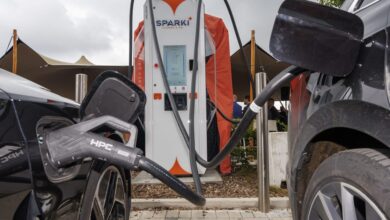Electric RVs Can Do It All
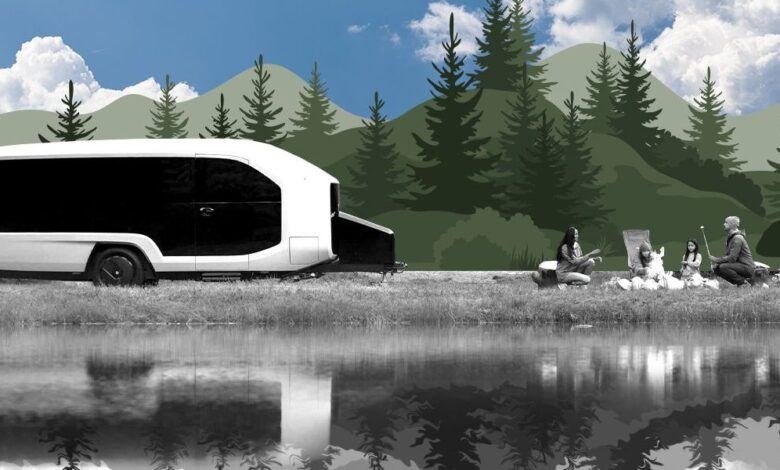
Battery-powered vehicles appear ill-suited to the backcountry — at first blush, at least. Big cities and well-traveled highways are where the plugs are. Far-flung locales, like the kind of places you’d want to drive an RV or tow a trailer, aren’t brimming with DC fast charging stations. And towing extra weight exacts a penalty on the EV’s range.
Yet the electric vehicle market is starting to get outdoorsy, providing more ways for people who might have gone electric because they care about the planet to get out there and see more of it. That’s thanks in part to startups and engineers trying to reimagine the RV market for the EV age.
The lowest-hanging fruit would be to build a trailer that’s as lightweight as possible and pushes the limits of aerodynamic design. In other words, the pointy Polydrops trailer. It began its life as a student architectural project by designers seeking to design a pleasant, mobile space. The result was a polygonal shape that looks sharp and futuristic while producing remarkably little aerodynamic drag.
Courtesy Polydrops
The resulting full-size trailer, the forthcoming P21, is all-electric, with an induction stove in the kitchen, an A/C heat pump, an on-board LFP battery, and 1,300 watts of solar panels atop the roof. And with its aerodynamic prowess, electric vehicles became the obvious use case. Polydrops published an entire white paper to boast at how little the P21, while being towed by a Tesla Model 3 or Y, punishes battery range compared to other trailers.
To see the next step up in what’s possible, look at the Pebble, a Silicon Valley-meets-Scandinavian take on what a trailer should be in the age of the EV. Like the smaller Polydrops, Pebble is an entirely electrical living space you can take with you down the highway, and includes solar on the roof along with charging ports on the side to keep it powered up. Pebble, though, goes all out on the bells and whistles.
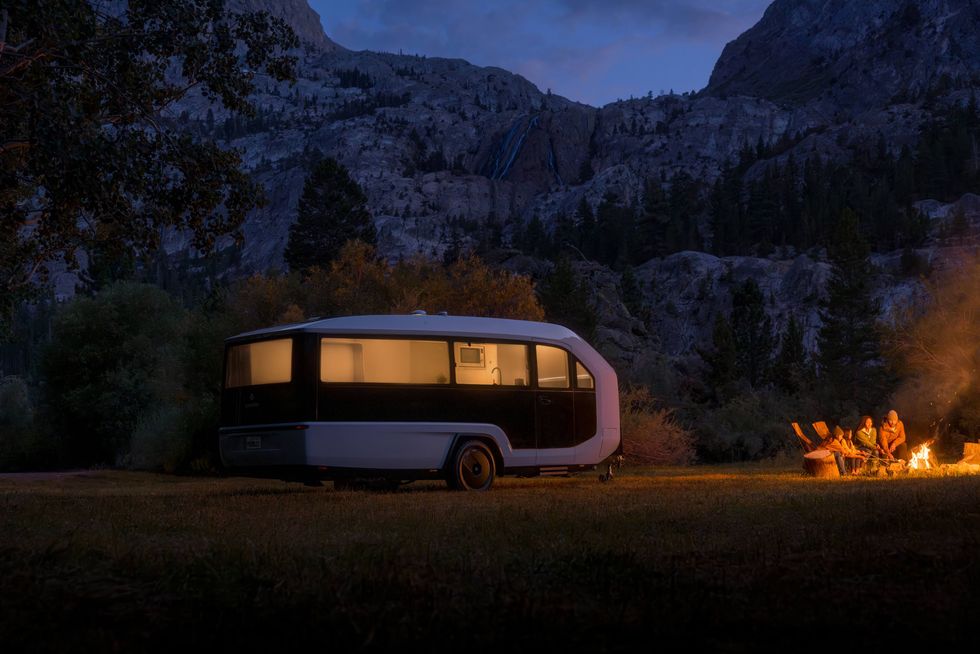 Courtesy Pebble
Courtesy Pebble
The 6,200-pound trailer includes on-board electrical motors, which open a wealth of possibilities. It means the Pebble can maneuver itself at a campsite into the desired position and orientation, and can do so with a zero-turn radius. It also offers the promise of skipping the tricky process of backing up the truck to the trailer, because Pebble will use computer vision to drive itself up to the hitch and connect to it. The motors can also contribute energy to pushing the trailer down the road. Using their extra boost, Pebble’s reps told me, a Rivian R1S towing the trailer still travels 1.8 miles per kilowatt-hour, down only slightly from the 2.0 miles per kilowatt-hour their SUV delivered without the trailer. “This is a full-blown EV,” they told me.
Lightship, an electric adventure company backed by Tesla alumni, is trying for another kind of wow factor. Its L1 has the solar panels and the sleek, modern design. Like the Pebble, it features self-propulsion from the on-board battery, “allowing the trailer to propel itself and achieve near-zero range or efficiency loss for the tow vehicle.” L1’s magic trick is to expand upon arrival. The trailer travels in a stowed configuration and, when you’re ready, the top half lifts up to double the height of the trailer, providing 360 degrees of windows to maximize views of wherever you wound up.
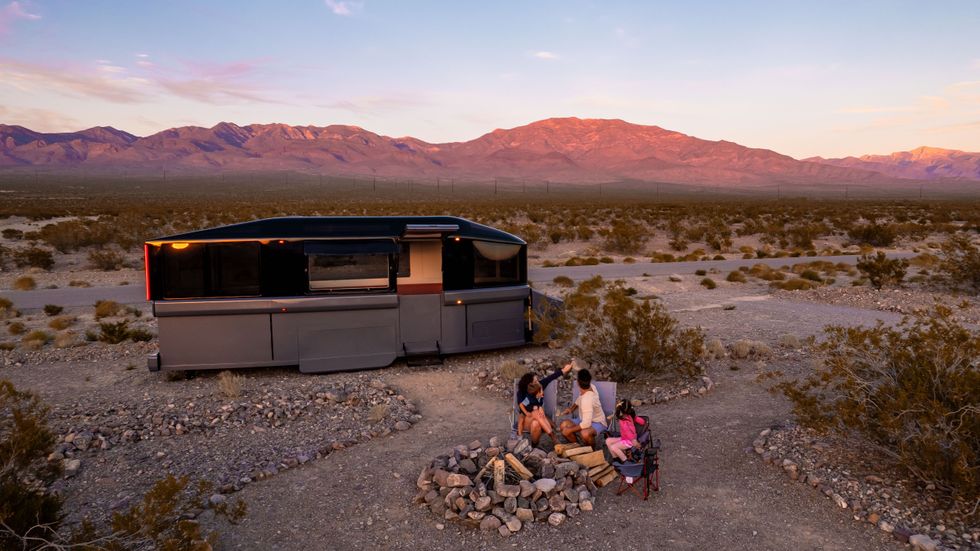 Courtesy Lightship
Courtesy Lightship
The self-propelled electric RV of tomorrow hasn’t quite arrived. Both the Pebble and the L1 are taking reservations now on the promise to go into production late in 2024. Both cost a pretty penny, with the Pebble starting at $109,000 for the simplest version and the L1 at $125,000. RV life has never been for the faint of wallet, of course.
Then there is the classic RV that one drives down the road, which might seem an unlikely candidate for electrification since it might push the limits of what a lithium-ion battery can provide. Nevertheless, here comes the electric Winnebago. The iconic RV company has built an all-electric prototype called eRV2, and says a small army of testers are driving the EV RV around the nation to work out the kinks. The eRV2 is based upon Ford’s E-Transit, the fully electric version of the full-size van that serves as a workhorse for business and #vanlifers alike.
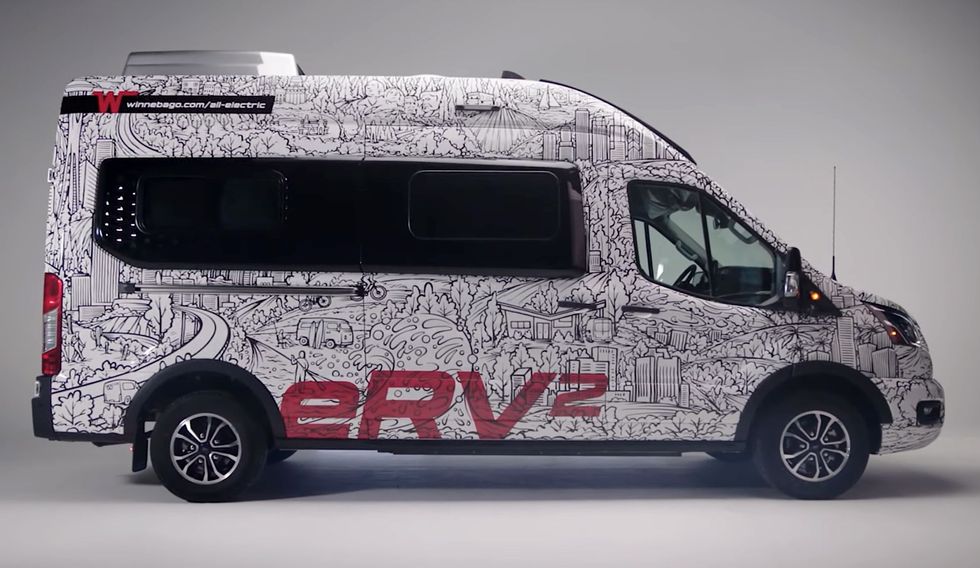 Courtesy Winnebago
Courtesy Winnebago
Winnebago’s is far from the only all-electric camper van to build upon the newly available EV van platforms. A group of entries are trying to use the trend of electrification to not only get fossil fuels out of camping, but to redefine what a trailer can be. There are modular EV campers whose interior can be changed over time. There are transformers.
There are about to be dozens of ways to look for America without burning fossil fuels.



